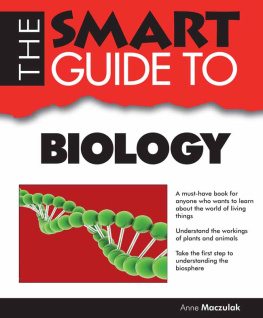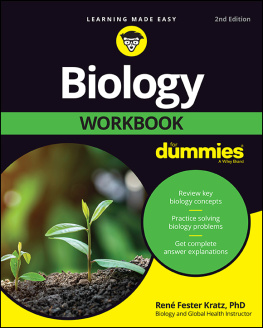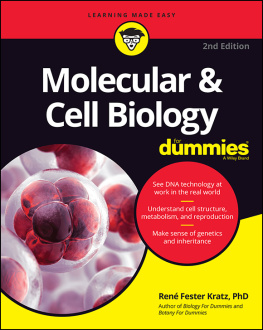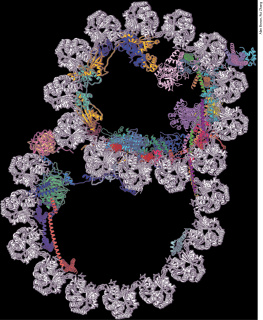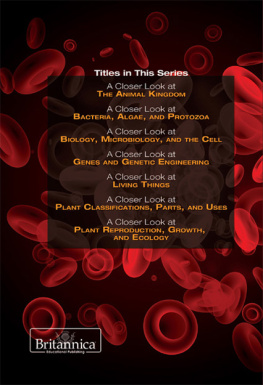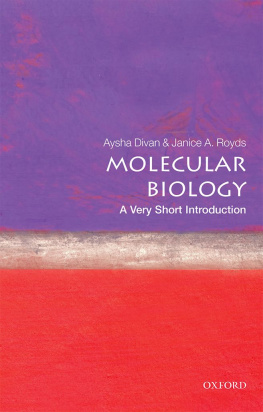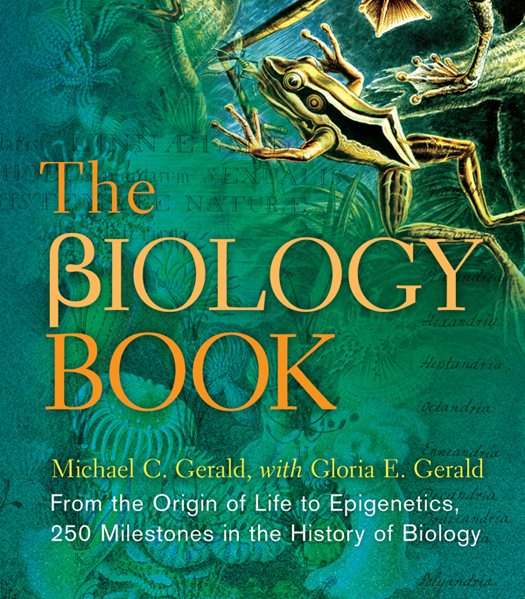Books by Michael C. Gerald
Nursing Pharmacology and Therapeutics
Pharmacology: An Introduction to Drugs
The Complete Idiots Guide to Prescription Drugs
The Drug Book: From Arsenic to Xanax, 250 Milestones in the History of Drugs
The Poisonous Pen of Agatha Christie
THE BIOLOGY BOOK
FROM THE ORIGIN OF LIFE TO EPIGENETICS, 250 MILESTONES IN THE HISTORY OF BIOLOGY
Michael C. Gerald, with Gloria Gerald

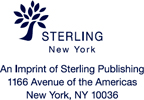
STERLING and the distinctive Sterling logo are registered trademarks of Sterling Publishing Co., Inc.
2015 Michael C. Gerald
All rights reserved. No part of this publication may be reproduced, stored in a retrieval system, or transmitted in any form or by any means (including electronic, mechanical, photocopying, recording, or otherwise) without prior written permission from the publisher.
ISBN 978-1-4549-1533-1
Cover Design: Elizabeth Mihaltse
www.sterlingpublishing.com
This book is dedicated to our fantastic children, Marc Jonathan Gerald and Melissa Suzanne Gerald, with gratitude and love and with the tremendous joy and pride we have in their accomplishments.
To the memory of my brother, Steven Gerald, and our parents, Tobias and Ruby Gerald and Hyman and Esther Gruber, for their love, encouragement, and inspiration, we also dedicate this book.
Introduction
The first page in the history of biology was undoubtedly written when our preliterate forebears became consciously aware of the distinction between living and nonliving objects. Later they recognized, at least at a superficial level, the similarities among, and differences between, living organisms encountered in their local environment while hunting for game and gathering food. During the course of preparing animals for a meal, their internal structures were revealed, but there is little reason to suspect that the differences between and among such animals aroused their intellectual hunters curiosity. Of far greater importance in the lives of our ancestors were the supernatural forces that were responsible for their existence and who rewarded them with good fortune and children, while punishing them by withholding food sources and inflicting them with disease. They hoped those decisions could be influenced by human and animal sacrifices. Some 12,000 years ago, humans began assuming greater control of their living environment by cultivating plants to provide food and domesticating animals, notably dogs, to assist and accompany them.
The earliest students of biology were healersvariously referred to as witch doctors, medicine men/women, or shamans, who were the resident experts in treating disease. Their therapy combined plant-based medicines and prayers and supplications to supernatural forces with healing practices they acquired by experiencenot systematic study. Among the greatest and earliest scholars of living organisms was Aristotle (384322 BCE), who systematically examined animals and plants and their characteristics, and categorized them based on meticulous observation, reasoning, and interpretation, devoid of supernatural explanations, sharing this knowledge in no fewer than four books.
In the late seventeenth century, Leeuwenhoektrained as a linen merchant and functioning as a self-taught amateur lens grinder, and whose letters to European scientific societies were limited to his native Dutchuncovered a previously unknown microscopic world that was inhabited by living beings that were neither plants nor animals. Using a microscope, it was possible for Schneider and Schwann in the 1830s to identify the cell as the basic structural and functional unit of lifeall life, both plant and animaljust as the atom is the basic unit in chemistry.
Prior to the nineteenth century, the study of living things, then called natural history, focused primarily on the diversity and classification of plants and animals as well as on the anatomy and physiology of animals. These naturalists employed observational rather than experimental methods of study. This dramatically changed in the nineteenth century, which hosted the explosive emergence of the systematic study of living things and descriptions of how living organisms functioned. Natural science was replaced by the newly coined designation biology. Advances in organic chemistry were applied to studying the chemistry of living organisms by such biochemical pioneers as Claude Bernard; those studies have continued to this present day with increasing sophistication.
Perhaps some of the most momentous findings in biology occurred in the decade between 1859 and 1868. In 1859, Charles Darwin advanced his theory of natural selection, the basis for evolution. Evolution, now the central theme of biology, has been used to explain both the unity and diversity of all living organisms. The scientific world reverberated in response to the appearance of Darwins On the Origin of Species by Means of Natural Selection but barely took notice when Gregor Mendel, an obscure Czech priest, published the results of his studies on the height of garden peas conducted in a monastery garden. Over three decades later, Mendels paper was rediscovered and served as the foundation for the new science of genetics. It also provided the basis for explaining mutations that lead to natural selection, an explanation that perplexed Darwin and his acolytes and that had challenged his theory of evolution. Since ancient times, living beings were believed to have arisen from nonliving sources, namely, by spontaneous generation. In a simple but elegant experiment, Louis Pasteur provided convincing evidence that living beings arose from earlier life forms. But the question still remains, what was the original source of life?
Among the most significant studies in the twentieth century, and continuing to the present, are those that have sought to understand the role of the individual cell components and their unique contributions to cell function. James Watson and Frances Cricks 1953 determination of the structure of DNA generated a revolution in biological research and a popular interest in science that continues to excite. Subsequent research focused upon explaining how genes, working through DNA, serve as the molecular basis for inheritance, direct the synthesis of proteins, and influence our health. Manipulation of DNA and biotechnology have been valuable contemporary tools in the development and modification of innovative medicines and the plants and animals we consume.
Unlike Aristotle, who was interested in and attempted to understand all knowledge of his day, the study of biology became increasingly detailed, diversified, and specialized in the late nineteenth century, giving rise to subdisciplines and professionally trained specialists who placed an increasing emphasis on active experimentation. General biology or zoology/botany courses and departments have fragmented into departments of biochemistry, molecular and cellular biology, anatomy and physiology, microbiology, evolutionary biology, genetics, and ecology. The milestones in each of these specialty disciplines will be found in


